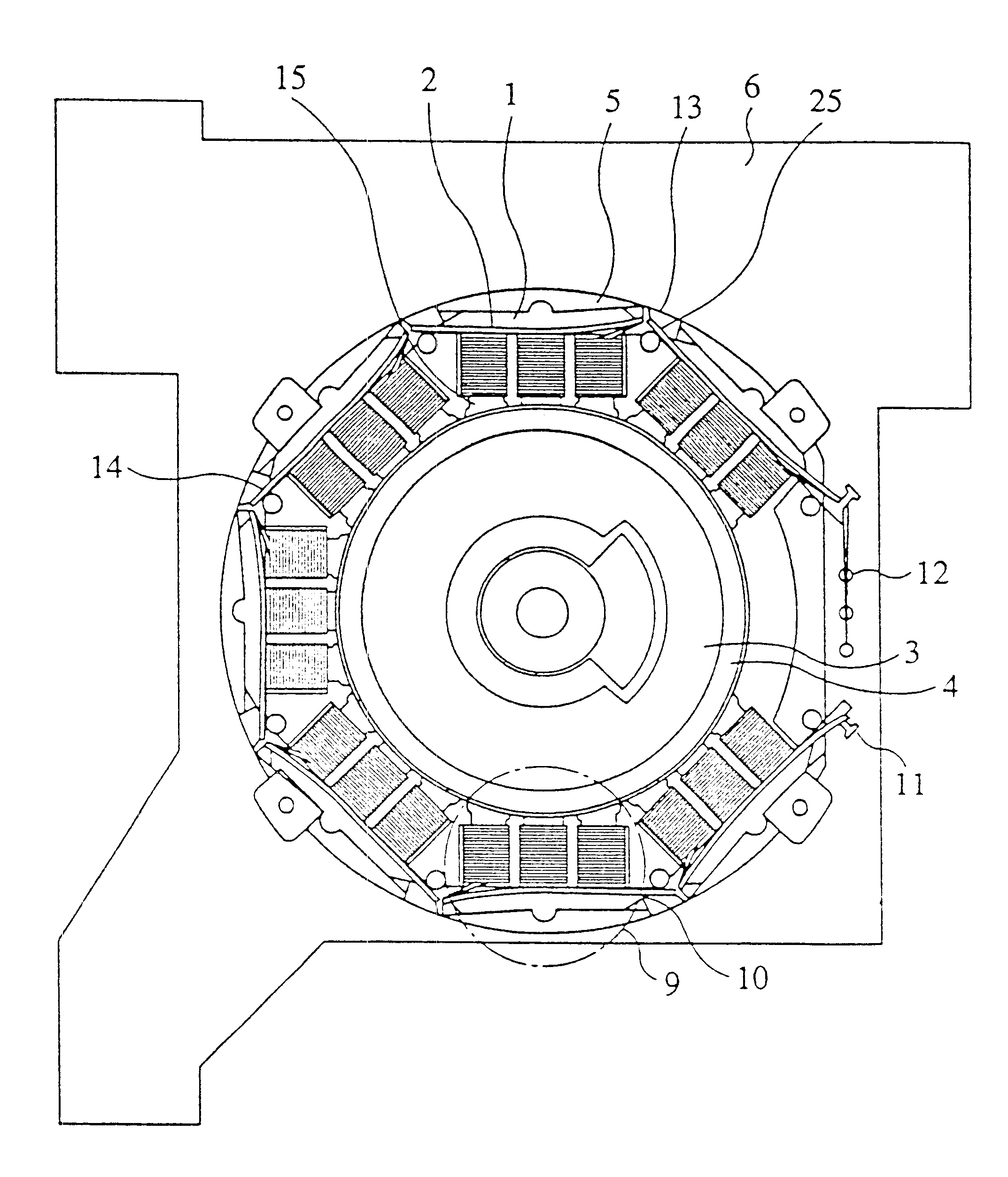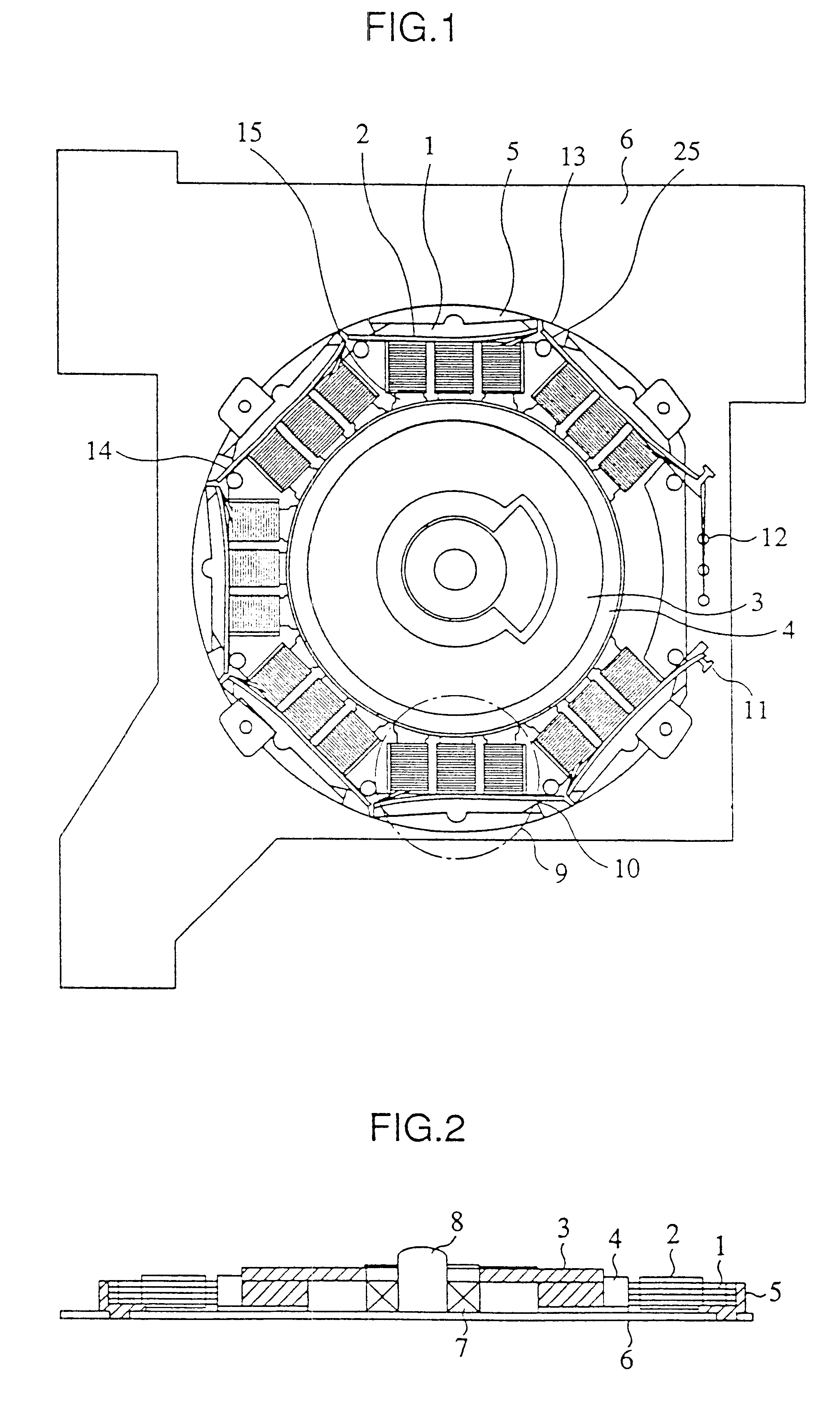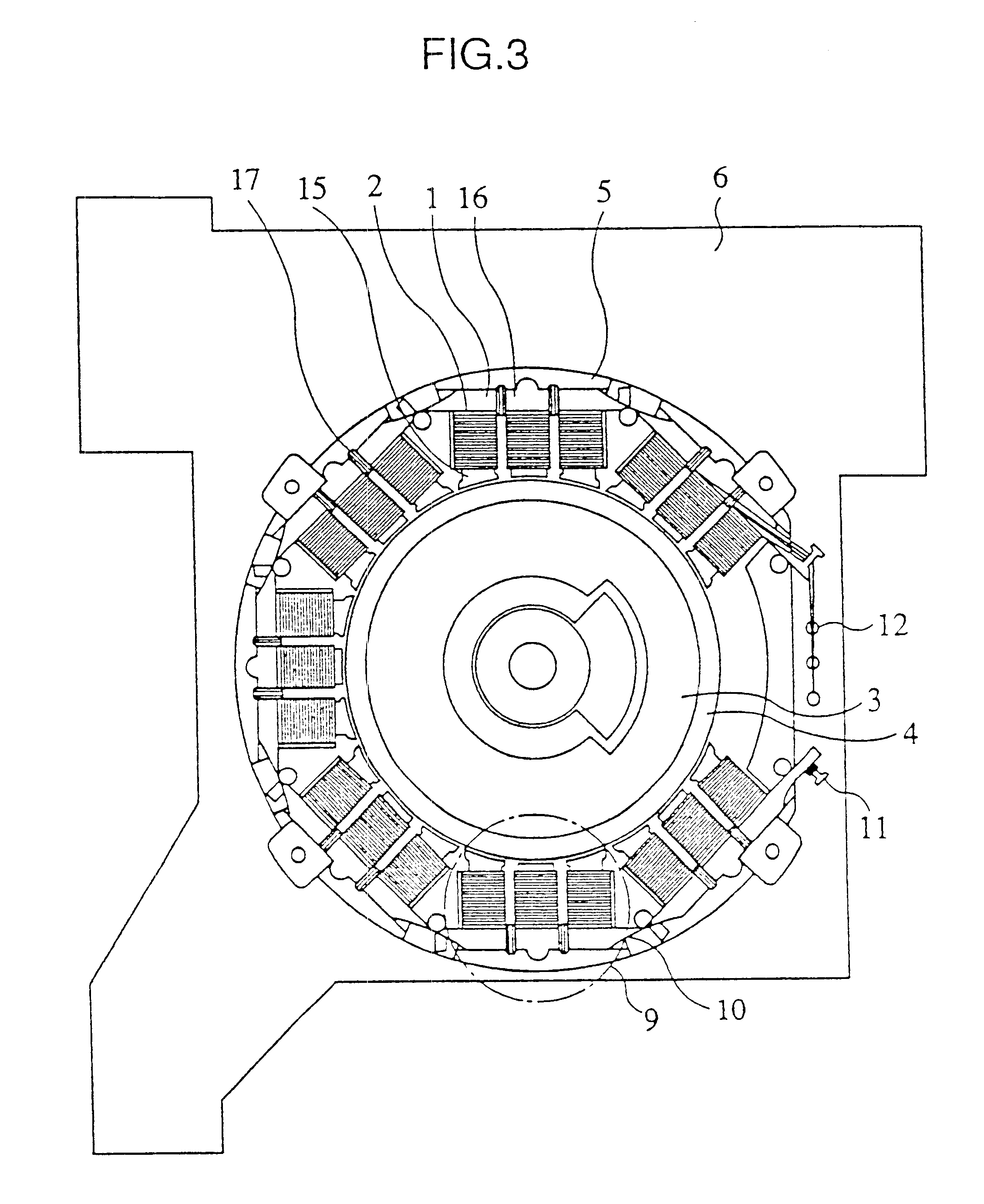Rotary motor and production method thereof, and laminated core and production method thereof
a technology of rotary motors and production methods, which is applied in the direction of stator/rotor bodies, magnetic circuit rotating parts, magnetic circuit shapes/forms/construction, etc., can solve the problems of inability to increase the coiling speed more than 1 and the stator teeth facing inward of the stator are difficult to wind
- Summary
- Abstract
- Description
- Claims
- Application Information
AI Technical Summary
Problems solved by technology
Method used
Image
Examples
embodiment 1
A rotary motor according to the first embodiment of the present invention will be described with reference to FIGS. 1, 2, 6 and 7. FIG. 6 shows a connecting stator core 20 which is formed by punching magnetic material by means of press. In the connecting stator core 20, the same number of magnetic teeth as the number of the phase of the motor are composed as a single block. A plurality of blocks of the connecting stator cores 20 are connected by means of thin portions 10. In producing the stator, some pieces of the connecting stator cores 20 are stacked and then subjected to insulation processing by coating or the like. Next, stacked connecting stator cores 20 i.e. a laminated core is wound with wires. That is, both ends of the stacked connecting stator cores 20 are held with tension applied thereto as shown in FIG. 7 and nozzles 21 of a winding machine which spouts conductive wire are turned around the magnetic teeth 15 in order to form coils. Although the magnetic pole teeth 15 of...
embodiment 2
Then, the rotary motor according to the second embodiment will be explained with reference to FIGS. 3, 7. In the rotary motor of the present invention, the coil 2 is formed around the magnetic pole teeth 15 and yoke coils 17 are formed on the yoke portion 16. Thus, magnetic flux generated in the coils 2 of the magnetic pole teeth 15 flows to the yoke portion 16 as well as to the rotor 3. The yoke coil 17 is supplied with electricity to enhance the magnetic flux flowing through the yoke portion 17.
When the yoke coil 17 is wound with wire, the stacked connecting stator core 20 is turned around its longitudinal length and the wire winding nozzle 21 is used. In this case, a single wire winding nozzle 21 should be used because the yoke coil 17 is wound with wire.
embodiment 3
Then, the rotary motor according to the third embodiment will be described with reference to FIG. 4. As in the first embodiment, the stacked connecting stator core 20 is wound with wire. However, in this case, the beginning end and the terminating end of the coil are tied on part of the block. After winding of wire terminates, the tied portion is soldered to electrically connect the coil end to the stator core material of each block. As for the tying protrusion 34 on which wire is tied, in the case of three phase, three protrusions for common terminal portion 11 are provided and three protrusions for coil terminal portion 12 are provided. The three tying protrusions 34 for the common terminal portion 11 are provided on the same block 9.
When the stator is assembled, the thin portion 10 of the stator is cut without cutting the crossover wire 25 and the stator is installed to the substrate. Neutral point connection is achieved by placing three tying protrusions 34 at the same potential...
PUM
 Login to View More
Login to View More Abstract
Description
Claims
Application Information
 Login to View More
Login to View More - R&D
- Intellectual Property
- Life Sciences
- Materials
- Tech Scout
- Unparalleled Data Quality
- Higher Quality Content
- 60% Fewer Hallucinations
Browse by: Latest US Patents, China's latest patents, Technical Efficacy Thesaurus, Application Domain, Technology Topic, Popular Technical Reports.
© 2025 PatSnap. All rights reserved.Legal|Privacy policy|Modern Slavery Act Transparency Statement|Sitemap|About US| Contact US: help@patsnap.com



